A
ADJUSTMENT - A prescribed allowance given to a customer toward the replacement of product pursuant to the warranty.
AGING - Deterioration of physical and chemical properties of rubber by oxidation over a period of time.
AIR PRESSURE - Force exerted by air within a tire, expressed in pounds per square inch or kilopascals (kPa).
ALIGNMENT - Angles of the tire and suspension axis relative to each other and the ground: camber, caster, toe. Also, the adjustment of components to bring them into a predetermined position for the most efficient operation of wheel and vehicle for proper even tire wear.
ANTIOXIDANT - A chemical, which when added to a rubber compound, prevents surface oxidation; used in tire tread and sidewall compounds to prevent weather checking and cracking.
ASPECT RATIO - The dimensional relationship between tire section height and section width; section height divided by section width.
B
BALANCE - A uniform mass distribution of a tire and wheel assembly about its axis of rotation.
BEAD - The area of the mounted tire which seats against the wheel
BEAD FILLER - A rubber extrusion in the bead area of a tire; used to permit a smooth contour of casing plies around the bead and to the lower sidewall. Also used in enlarged form to stiffen the lower sidewall of a tire.
BEAD SEAT - The position where the tire rests and seals on the inside of the rim.
BELT - An assembly of fabrics and/or wire under the tire's tread used as a reinforcement. It also constrains the outside diameter against inflation pressure and centrifugal force.
BELT EDGE WEDGE OR INSERT - An extrusion of rubber placed under the edges of a belt; used in radial tires to improve durability.
BLOCK - An individual part (or "element") of tire's tread.
BODY - The fabric inner structure of the tire.
BREAKAWAY - The point at which tire cornering traction is lost.
C
CONICITY - Quality or state of being conical. (Cause of radial tire pull.)
CONTACT PATCH – The part of the tire in contact with the road surface. See Footprint.
CORD - Fabric or steel wire strands forming plies and belts in tires.
CORD ANGLE - The degree at which the plies or belts cross the centerline of any given tire.
CORNERING FORCE - The force that turns a vehicle around a corner. The opposite of lateral or centrifugal force.
CROSS-SECTION WIDTH - External sidewall- to-sidewall measurement of inflated tire, exclusive of ornamental ribs and lettering. Sometimes called section width.
CROWN - The region between the shoulders of the tire.
CURB GUARD - A rubber protrusion running circumferentially around some tires just above the rim flange to reduce curb scuffing of the wheel.
CURB WEIGHT - The total weight of a vehicle with no passengers and a full tank of gas.
C.U.V. - Crossover Utility Vehicle.
D
DEFLECTION – The difference between a tire’s unloaded or free radius and the loaded radius.
DESIGN RIM - A rim with a specified width; used to determine basic tire dimensions.
D.O.T. - A tire branding symbol, signifying the tire meets requirements of the Department of Transportation.
DRIVE WHEEL APPLICATION - Describes tires, which are designed specifically for optimum performance on drive wheels.
DUAL COMPOUND TREAD - A tire tread with two rubber compounds.
DUALS - On light trucks, this describes two tire and wheel assemblies mounted on each side of a drive axle.
DYNAMIC BALANCE – A condition in which a tire and wheel assembly has weight distributed equally on both sides of the wheel’s axis of rotation. Also referred to as “spin balancing” or “computer balancing”.
E
ETRTO - European Tyre and Rim Technical Organization.
EURO METRIC TIRE SIZE SYSTEM - A tire sizing system originating in Europe stating the cross section (in millimeters), aspect ratio, tire construction type, rim diameter (in inches), load index and speed symbol (e.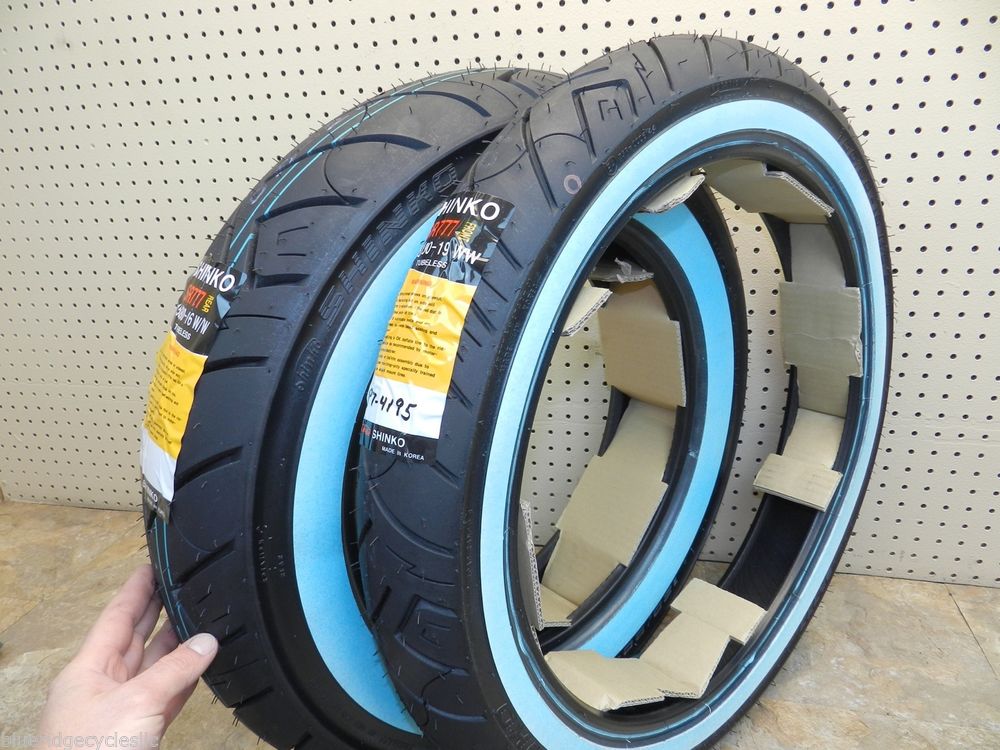 g.: 185/70R14 88T).
g.: 185/70R14 88T).
EXTRA LOAD - A P-Metric tire with a maximum inflation of 41 psi. or 50 psi. For Euro-Metric tires, the term ‘reinforced’ means the same as “Extra Load”. Extra Load tires’ added reinforcement combined with higher permitted air pressures enable them to carry greater loads than Standard- or Light-Load tires.
F
FABRIC - Material made up of parallel cords used in tire construction.
FLOTATION TIRE - A light truck tire designed to offer enhanced traction and impact absorption in off-road driving.
FOOTPRINT - The area of a tire’s tread where it meets the road surface. See Contact patch.
G
GROOVES - Circumferential channels between the tread ribs of a tire.
GROSS AXLE WEIGHT RATING (GAWR) - The maximum weight that the front or rear axle can carry. The front and rear gross axle weights must not exceed the front and rear GAWR’s.
GROSS COMBINATION WEIGHT RATING (GCWR) - The total weight of the loaded tow vehicle and the loaded trailer.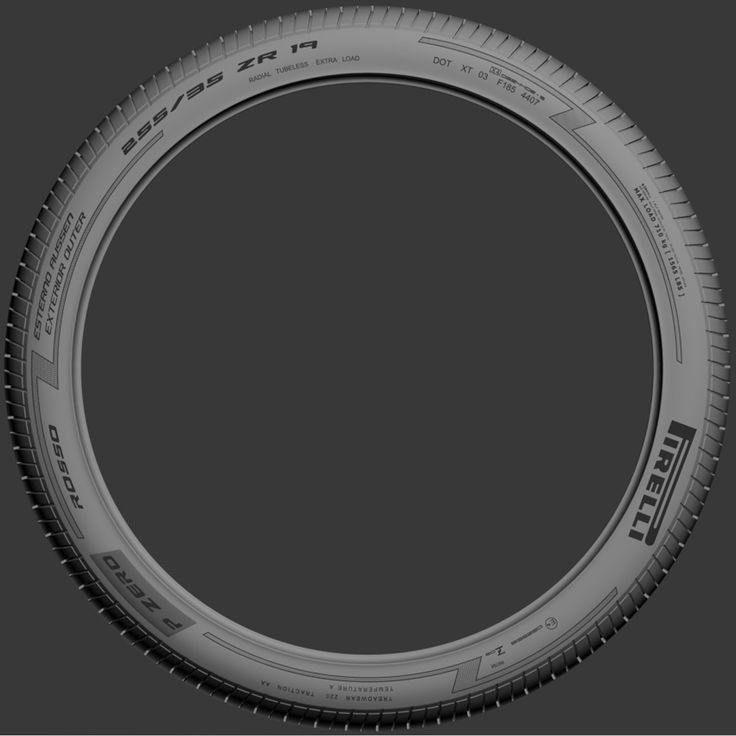
GROSS VEHICLE WEIGHT (GVW) - The total weight of the vehicle, including passengers, fuel, cargo, and attachments.
GROSS VEHICLE WEIGHT RATING (GVWR) - The maximum permissible loaded weight of the vehicle and takes into account the capabilities of the engine, transmission, frame, spring, brakes, axles, and tires. The GVW must not exceed the GV
H
HIGH FLOTATION SIZING SYSTEM FOR LIGHT TRUCKS - A system displaying overall diameter in inches, section width in inches, type of tire construction, and rim diameter in inches (e.g.: 33x12.50R15LT). See Flotation Tire.
I
IMBALANCE - A non-uniform distribution of mass in a tire and wheel assembly about its axis of rotation causing bounce (static imbalance) or shake (dynamic imbalance).
INNERLINER - A layer of low-permeability rubber laminated to the inside of a tubeless tire to make it hold air.
K
KILOPASCALS (kPa) - Unit of air pressure; in metric terms it takes 6. 895 kPa to equal 1 p.s.i.
895 kPa to equal 1 p.s.i.
L
LIFT POINTS - Specific contact points on a vehicle chassis to be used when lifting it for service. To prevent serious injury to persons and/or permanent vehicle damage, owners’ manuals should always be consulted for proper lift point locations prior to lifting or jacking a vehicle. Also known as “jacking points”.
LOAD CARRYING CAPACITY - The load a particular size tire can carry at a given inflation pressure under certain driving conditions, as established by the Tire and Rim Association.
LOAD INDEX - A numerical code associated with the maximum load a tire can carry at the speed indicated by its Speed Symbol under specified service conditions up to 130 mph. For speeds in excess of 130 mph, actual load on the tire shall be reduced in accordance with Tire and Rim Association guidelines.
LOAD RANGE - Replaces the former ply rating term and identifies load and inflation limits.
LOAD RATING - The weight that a wheel is designed to support in normal service.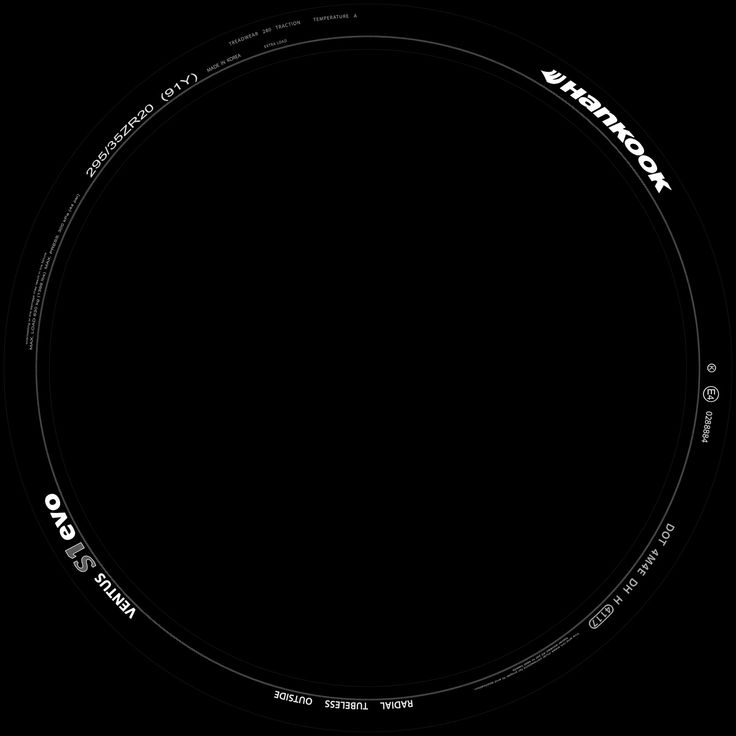
LT-METRIC - A light truck sizing system expressing the section width in millimeters, aspect ratio, type of construction, and rim diameter in inches (e.g.: LT235/85R16 120/116Q E).
M
M + S, M/S, or M & S—A tire sidewall designation indicating that the tire meets the USTMA/RAC definition of an all-season tire.
MATCH MOUNTING - A mounting procedure that matches the high point of a tire with the low point of its wheel to help ensure a smooth ride. A dot or mark on the tire is matched with a dot, a sticker, or the valve hole on the wheel.
MOUNTAIN SNOWFLAKE PICTOGRAPH – Winter passenger and light truck tire design identification. Tires with this symbol provide improved snow performance compared to tires meeting the USTMA/RAC all-season tire definition.
N
NHTSA - National Highway Traffic Safety Administration.
NOMINAL – A designated or theoretical size that may vary from the actual.
O
ORIGINAL EQUIPMENT (OE) - Refers to tires sold to automobile manufacturers for installation on new vehicles.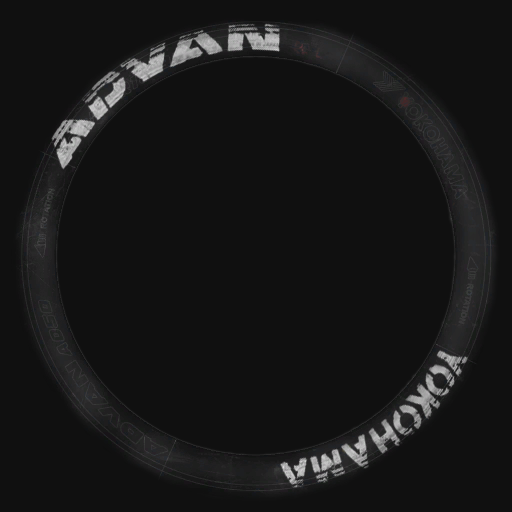
OUT-OF-ROUND - A wheel or tire condition in which the wheel or tire is not round.
OVERALL DIAMETER - The diameter of an unloaded of a tire when mounted on a wheel and inflated to rated pressure.
OVERINFLATION - The inflation of a tire above the car manufacturer’s recommended pressure. May result in a rough ride, bruise damage, and premature wear of suspension components.
OVERSTEER - A cornering condition where rear tires lose traction before the front tires; the tendency of a car to turn more sharply than the driver intends while negotiating a turn.
OXIDATION - Reaction of a material with oxygen, usually resulting in degradation of the material.
P
PERMEATION – The process where air molecules migrate through the sidewalls of the tire. Tires lose air normally through the process of permeation.
PITCH - The length from a point on one tread block to the same point on the next tread block. Pitch is varied around a tire to minimize noise.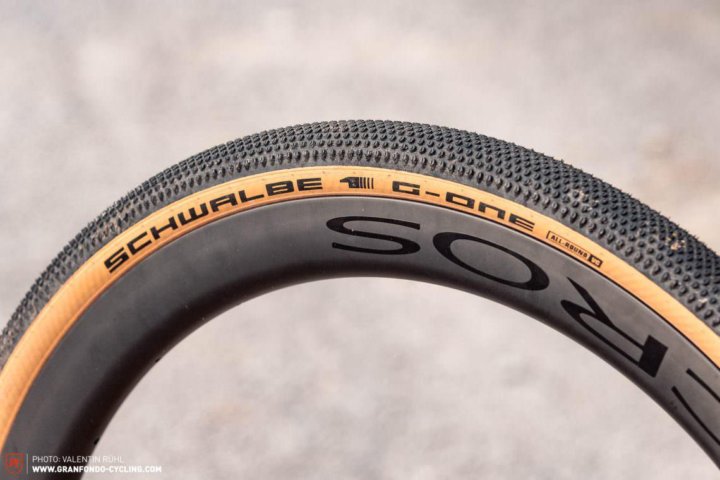
PLIES - The layers of material that make up the cord body and belts of a tire.
PLOWING - Loss of traction of front tires during cornering. also known as understeer or “pushing ”.
PLUS 1/PLUS 2 CONCEPT - A concept to improve handling and performance through the mounting of tires with wider section widths and lower section heights to rims of 1, 2 and sometimes even 3 inches greater diameter. Correct Plus 1 or Plus 2 fitments maintain the same tire diameter as the original tires.
P-METRIC SYSTEM - A tire sizing system expressing the section width in millimeters, aspect ratio, type of tire construction, rim diameter in inches, load index and speed symbol (e.g.: P225/70R15 100S).
POLYESTER - A strong and lightweight synthetic cord material used in casing construction.
POLYMER - A chemical compound made up of a large number of identical components linked together like a chain.
PSI - Pounds per Square Inch.
PULL - The tendency of a vehicle to drift to one side when driving straight.
R
RADIAL RUNOUT - A measurement of out-of-roundness; by rotating the inflated tire and measuring how far the tread surface varies (up and down) from a true circle.
RADIAL TIRE - A tire built with casing plies arranged at a 90 degree angle to the center line of the tread.
RAYON - A synthetic cord material used in casing and belt construction; provides high dynamic strength and good rubber adhesion.
REVOLUTIONS PER MILE (RPM) - The number of revolutions a tire makes in a mile.
RIBS - The rubber elements at the tire tread which contact the ground, oriented in a generally circumferential direction.
RIM DIAMETER - The diameter of the bead seat of the wheel, (and not it’s edge or “flange”).
RIM FLANGE - The outermost edge of a wheel’s rim to which clip-on weights are attached.
RIM WIDTH - The measurement inside of the rim flanges; i.e. from inside the flange on one side to inside the flange on the other side.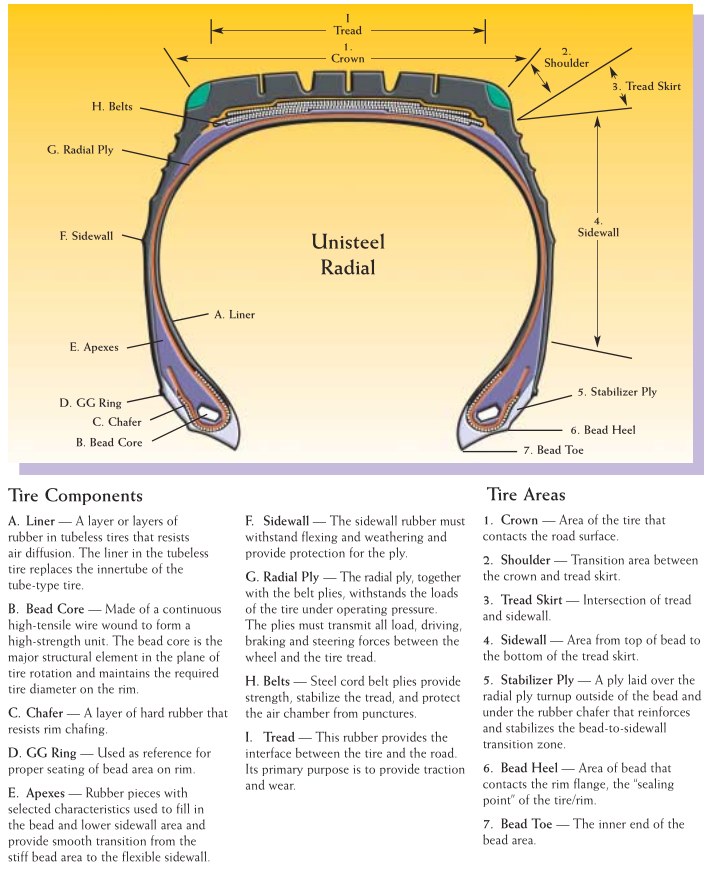
ROLLING RESISTANCE - The force required to roll a loaded tire.
ROTATION - The pattern of movement of tires to different positions on a vehicle to compensate for irregular or unequal tire wear.
RUBBER-TO-VOID-RATIO - The ratio between the rubber area and the groove area in a tire footprint.
RUNOUT GAUGE - A device used to check radial and lateral runout.
S
SAFETY HUMP - The raised area circling the rim of the wheel and located slightly inward from the bead seat. It's purpose is to keep the tire from slipping into the rim well, if accidentally deflated while driving.
SECTION HEIGHT - The distance from the bottom of the bead to the top of the tread.
SECTION WIDTH - The distance from sidewall to sidewall, exclusive of any raised lettering.
SERIES - The ratio of the height of a tire (from the bead seat to the top of the tread) to the width of the tire (from sidewall to sidewall). It is also referred to as the aspect ratio or “profile” of a tire.
SERVICE DESCRIPTION (LOAD INDEX/SPEED SYMBOL) – The Service Description consists of a Load Index and a Speed Symbol. The Load Index is a numerical code that specifies the maximum load a tire can carry at the speed indicated by its Speed Symbol, at maximum inflation pressure.
SHIMMY - A rapid oscillation or wobble of a wheel and tire assembly about the steering axis.
SHOULDER –The outer edges of a tire’s tread where it joins the sidewall.
SIDEWALL - The side of a tire between the tread shoulder and the rim bead.
SIDEWALL ROLLOVER –The condition that occurs during hard cornering when a tire sidewall contacts the road surface.
SIPES - Small, narrow slots molded into the tread elements which increase the number of traction edges of the tire and improve its traction on wet, snowy or icy pavement.
SLIP ANGLE - The difference between the direction a tire is traveling and the direction it is pointing.
SLOTS - Grooves positioned in the ribs and shoulders of the tread to aid wet pavement traction.
SPEED RATING (SPEED SYMBOL) – An alphabetical system describing a tire’s maximum permissible speed under specified laboratory conditions. It also serves as an indication of the tire’s performance (emergency response and stability, braking traction, etc.) at everyday speeds.
SQUIRM - Distortion of tread elements in the footprint of a tire as it rolls.
STABILITY - The ability of tires to maintain direction of a vehicle on curves without causing excessive body sway.
STANDARD LOAD - A P-Metric tire with a maximum inflation pressure of 35, 44, or 51 psi.
STAR PATTERN - The proper method for sequential tightening of lug nuts in a 5-lug bolt circle.
STATIC LOADED RADIUS - The measurement from the middle of the axle to the road surface; measured with the tire inflated to required pressure and carrying the rated load.
STEEL BELT - A belt material used in tires. Its high stiffness provides good handling and low tread wear.
STEERING RESPONSE - Reaction time between driver input at the steering wheel and the directional change of the vehicle.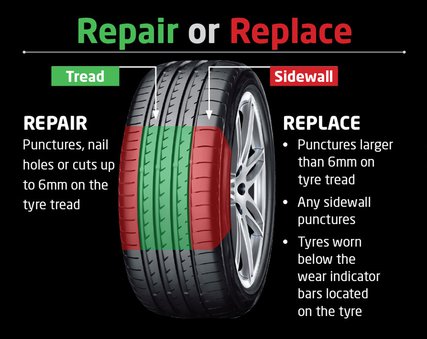
SYNTHETIC RUBBER - Rubber made from chemicals as a substitute for natural rubber; properties can be tailored for specific needs.
T
TENSILE STRENGTH - The maximum tensile force per cross-section area that a material can withstand before it breaks.
TORQUE - The product of a force applied through a lever arm to produce a rotating or turning motion.
TORQUING - The securing of the tire/wheel assembly to the vehicle by the tightening of the wheel’s lug nuts to the studs of the vehicle’s hub; in the case of specialty wheels, torquing should always be done with a manual torque wrench.
TPMS - TIRE PRESSURE MONITORING SYSTEM - DEVICE MANDATED BY THE NHTSA (USA) TO HELP MOTORISTS MAINTAIN PROPER TIRE AIR PRESSURE.
TREAD - The portion of a tire which contacts the road surface.
TREAD DEPTH - The distance from the tread surface to the bottom of the grooves
TREAD RADIUS - The radius of curvature of the tread arc across the tread.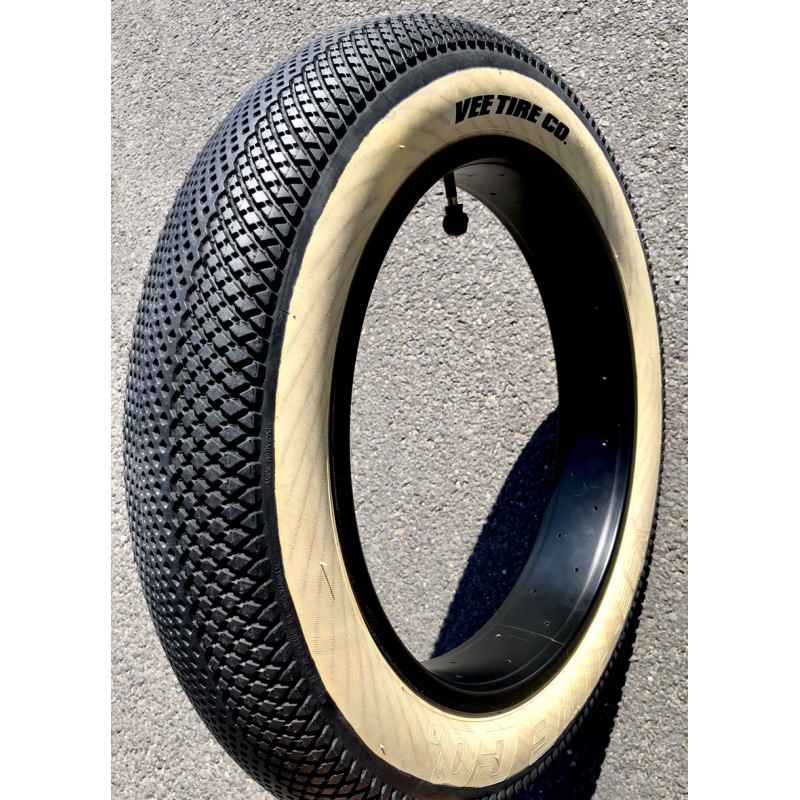
TREAD SHAVING - The buffing of tread from a tire with a blade (usually to half of original tread depth) to reduce tread squirm and tearing in racing applications.
TREAD WEAR INDICATORS - A raised ridge positioned laterally across the tread grooves which becomes even with the tread surface when the tire is worn to 2/32” tread depth; used to define the legal wear-out point in a tire’s life.
U
UNDERINFLATION - A condition where a tire is inflated below the carmaker’s recommended pressure.
UNDERSTEER - A cornering situation where the front tires generate more slip angle than the rear tires; the tendency of a car to turn less sharply than the driver intends and compensated for by the addition of more steering input.
UNDULATION - A slight indentation or wavy appearance on the sidewall surface of an inflated radial tire. Radial body ply cords run straight across the tire from bead to bead and the joining of the ply material in the sidewall area may sometimes cause this condition.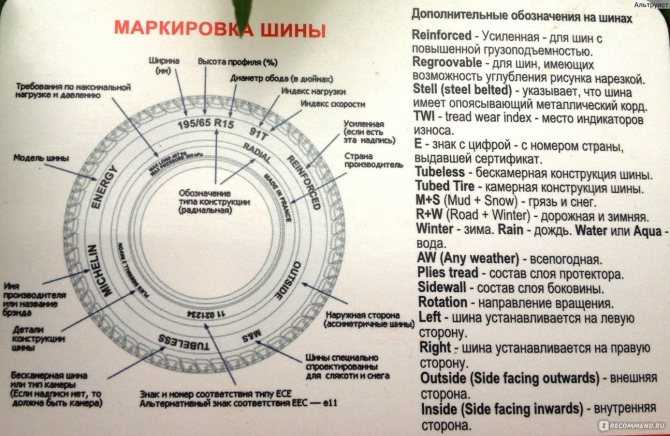 Undulation is a common characteristic of radial tires and will not affect the performance of the tire. Refer to the USTMA “Tire Information Service Bulletin”, Volume 21 / Number 1, dated December 1984, for more information.
Undulation is a common characteristic of radial tires and will not affect the performance of the tire. Refer to the USTMA “Tire Information Service Bulletin”, Volume 21 / Number 1, dated December 1984, for more information.
UNIFORMITY - A term describing the amount of radial and lateral force variation in a tire.
USTMA - United States Tire Manufacturers Association
UTQG - Uniform Tire Quality Grade labeling; a performance measurement of a tire, based upon its test results in three categories: treadwear, traction, and temperature resistance.
V
VULCANIZATION - The linking together, under heat and pressure, of rubber compound polymers, which gives rubber increased strength and elasticity.
W
WHEEL WEIGHT - Weights that are either clipped, taped, or self-adhered to the inside or outside of the wheel in order to balance the tire/ wheel assembly.
14 Apr
Bulges and indentations can be nothing to worry about or a serious difficulty.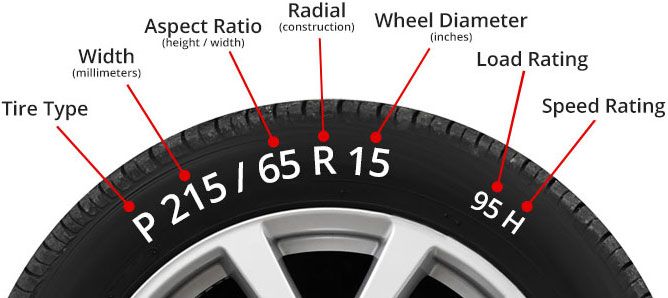
Currently being manufactured out of rubber (and a bunch of other stuff, but we’ll stick with rubber for now) tires are fairly flexible. They want to be, in order to offer with modifying road circumstances. Tires created entirely out of stone, irrespective of what cartoonists would have us feel, basically don’t function very properly.
It is this extremely overall flexibility that will help to give contemporary tires their strength and resilience. Nevertheless, it can also lead to indentations and bulges.
There’s nothing abnormal about small indentations in the sidewall. These indentations (or “undulations” as they are occasionally known as) are a purely visible problem. Tire functionality is not impacted at all. In simple fact, they are really usually identified on radial tires as a characteristic of the tire building approach. The indentations are a lot more visible on bigger tires, because of their taller sidewall, and on tires that work at the increased finish of the inflation strain scale.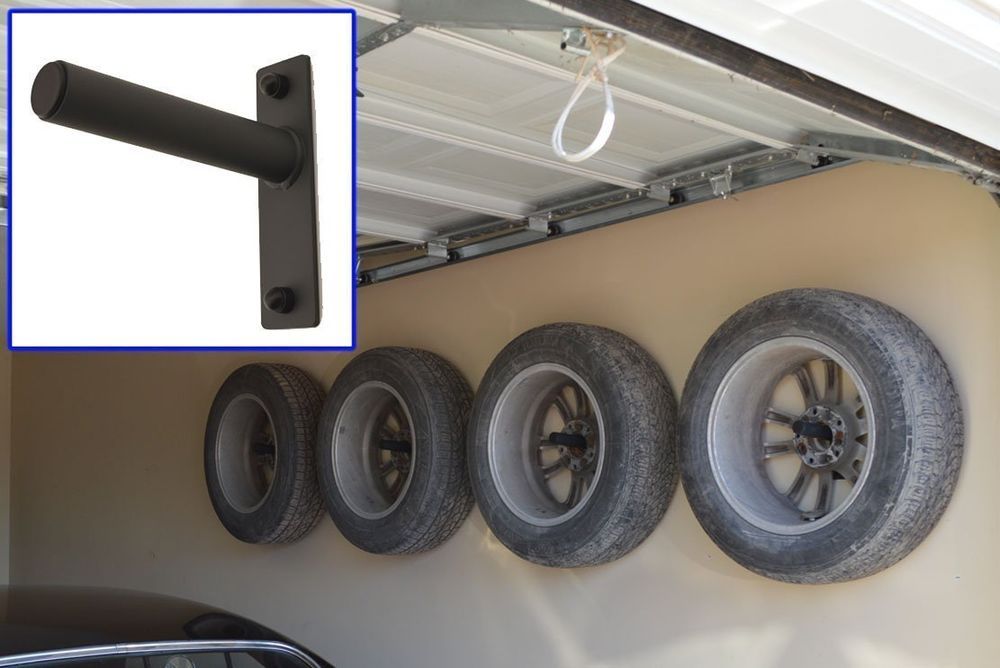
Tires are bolstered with cords of fabric, normally a synthetic these kinds of as polyester or nylon. Radial tires have at the very least a single layer of these cords, a lot more if it is a heavy duty tire. The cords run parallel to each other but occasionally overlap. This overlap can trigger a minor indentation when the tire is inflated to total strain.
These indentations could not look fantastic, but they are harmless. Even if they appear on a freshly put in tire you have no result in for alarm. The identical can not be mentioned for bulges.
Bulges showing on the sidewall of a just lately set up tire are undoubtedly bad news. In most circumstances, these bulges are the consequence of a space among some of the body ply cords inside of the tire. When this happens with new tires the answer is basic: return the tire.
This scenario is virtually invariably included underneath the manufacturer’s guarantee. This is a workmanship/materials defect, and it is not the fault of the technician that put in the tire. Despite the fact that tire manufacturer’s do a lot of screening before the tires achieve the market place, this is a dilemma that just isn’t going to show up until finally the tire is put in and inflated.
Despite the fact that tire manufacturer’s do a lot of screening before the tires achieve the market place, this is a dilemma that just isn’t going to show up until finally the tire is put in and inflated.
If you’re tires have developed a bulge a important volume of time after becoming installed, then it almost certainly is not the components that are at fault. Ply cords, even though by no implies fragile, can be ruined by impacts with curbs or highway hazards, or by working into potholes. If this takes place, it really is time for a pay a visit to to your regional tire seller. Find more information about the best quality of Goodyear Tires at http://www.discountedwheelwarehouse.com/Goodyear_Tires.cfm.
Like Loading...
17 February 2017
The behavior of the car on the road depends largely on the tires.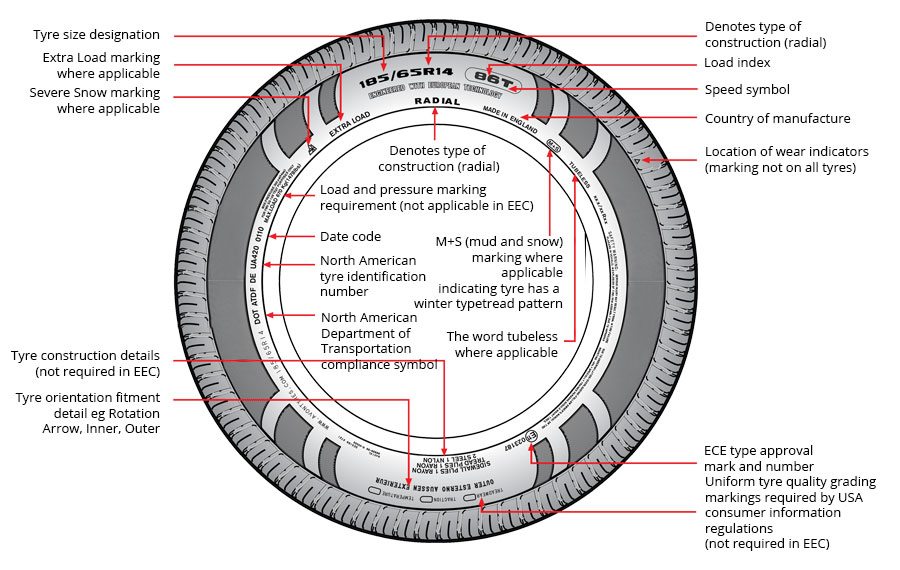 It is they that affect the possibility of driving on roads with a wide variety of surfaces, stopping distance, keeping the trajectory when entering turns, etc. The tires themselves are made of rubber, which provides good grip and noiselessness, but the use of this material affects the service life. Constant contact with the roadway, temperature changes, friction leads to the fact that the tire simply wears out, or rather, its main working surface, the tread, wears out, and it does not fully perform its functions. You should not expect good grip from a “bald” wheel (with a worn tread), which in turn affects traffic safety.
It is they that affect the possibility of driving on roads with a wide variety of surfaces, stopping distance, keeping the trajectory when entering turns, etc. The tires themselves are made of rubber, which provides good grip and noiselessness, but the use of this material affects the service life. Constant contact with the roadway, temperature changes, friction leads to the fact that the tire simply wears out, or rather, its main working surface, the tread, wears out, and it does not fully perform its functions. You should not expect good grip from a “bald” wheel (with a worn tread), which in turn affects traffic safety.
Tire structure
No matter how good a tire is, it will eventually wear out and need to be replaced. But it is one thing when it departed a completely normal period, approximately coinciding with the mileage declared by the manufacturer, while the wear is uniform (around the entire circumference of the working surface), and it is quite another if the tire did not depart even half of the declared resource, and its wear is uneven. And here the matter is more about the financial part, since changing tires every season is quite an expensive pleasure.
And here the matter is more about the financial part, since changing tires every season is quite an expensive pleasure.
The service life of a set of tires depends on a number of factors:
As for the material of manufacture, everything is clear here. Tires made of low-grade rubber with a high soot content will wear out the tread very quickly, cord breaks are possible, since the material itself is simply not able to withstand the loads that fall on the wheels.
The technical serviceability of some components seriously affects the tire life. These components include the suspension, brake system, steering mechanism. Malfunction and violation of the adjustments of each of the specified components will necessarily lead to uneven wear. This also includes the technical condition of the wheels themselves - a mismatch in tire pressure, imbalance, long-term parking of a car without movement - one of the main reasons for uneven and rapid wear of the tread.
As for the specifics of operation, the condition of the tires can be affected by an aggressive driving style with frequent slippage, a mismatch of the type of rubber for the season (especially if winter tires are used in the summer), frequent or constant trips on gravel roads and rubble.
It should be noted that tire wear also depends on the axle on which they are used. If these are steered wheels, then the side zones of the working surface are erased more. All this is due to the fact that when changing the trajectory of movement (when turning), all the forces acting on the wheel lead to deformation of the tire, as a result of which it contacts more with the side surfaces of the tread, and not with the central one. As for the drive axle, it has nothing like that, on the contrary, its main contact patch falls on the middle of the tread.
Front-wheel drive cars combine all of this, so the wear of the front tires is more even, but the tread wears out faster than the wheels mounted on the rear axle.
Since traffic safety, car handling, braking distance depend on the condition of the tires, you should periodically inspect them for defects, as well as check the depth of the residual tread.
It is noteworthy that uneven tire wear has its own specific causes, so it is not difficult to determine what caused this. But the wheels themselves cannot be restored, so all the measures taken will help save the tires that will replace the damaged ones.
Read also: What do the numbers on the tires mean or how to decipher the tire markings.
The most common types of uneven wear are:
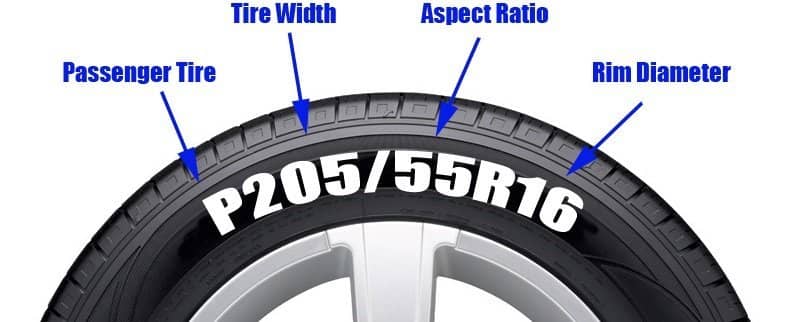
Tire wear on both edges
Let's go through each type. So, wear along the edges on both sides of the rubber (it is visually visible that the tread is worn off much more strongly on the sides than in the central part) indicates that the pressure in the wheels is below normal. This happens due to the fact that in the central part the tire flexes, and the main load falls on the side zones. It is worth noting that this result leads to the operation of tires with insufficient pressure for a significant period.
Wear on the center of the tread
Wear on the center of the tread indicates excessive tire pressure. Under such conditions, the roundness of the working surface is higher, so only the middle part of the tread is in contact with the road, and the side ones simply do not touch it.
One-sided tire wear
One-sided wear, most often wear on the inside of the rubber, is the result of incorrectly set camber/toe angles.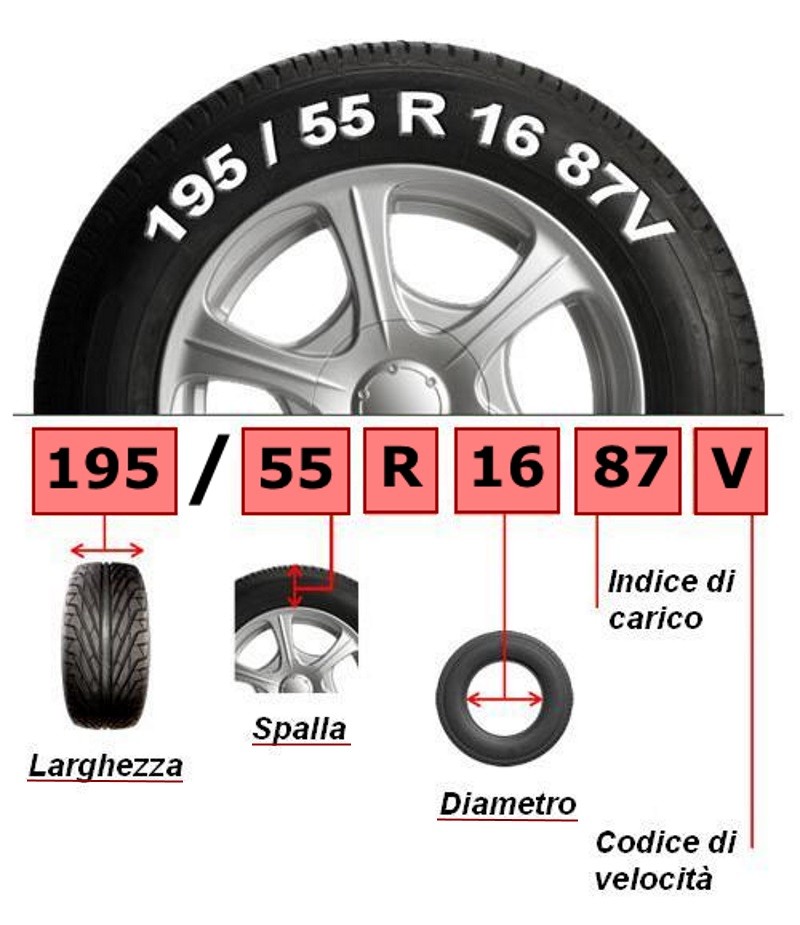 If the wear is seen from the inside, then the corners are heavily littered in the negative direction, and the rubber is worn on the outside, then the camber value is positive (for front-wheel drive cars, these angles should be 0).
If the wear is seen from the inside, then the corners are heavily littered in the negative direction, and the rubber is worn on the outside, then the camber value is positive (for front-wheel drive cars, these angles should be 0).
See also: What tires to choose for the summer
The above list of rubber wear is obtained around the entire circumference of the wheel. But it often happens that the scuffs on the tire look like spots, and there may be several or only one. Typically, these types of wear are formed in the middle part of the tread, although they also occur on the side zones.
Wear spots
If there are several such spots, and they are located around the circumference, then this may indicate:
Tire wear from emergency braking
But if only one spot is noticed, then this is the result of emergency braking, in which the wheels were completely blocked.
Hernia on the wheel
The appearance of “bumps” on the tire is the result of the use of low-quality cord in the design, strong impact loads, in which the cords simply break, and the tire loses strength.
Deformation of the tire during long-term parking
The appearance of a platform (flat surface) on the circumference of the tire is the result of a long-term parking of the car without movement. Therefore, the section of the wheel that was in contact with the canvas took its shape. At the same time, if you do not pay attention to this and start operating the car, then increased loads (beating) will occur at this site, which will lead to the appearance of an erased spot. But this type of wear is very easy to eliminate by pumping the wheels, after which the car must be moved and left for a while (air pressure will restore the surface).
All of the listed types of wear (except the last one) affect traffic safety, so such tires already require replacement, although not urgent (does not apply to the appearance of hernias on the wheel).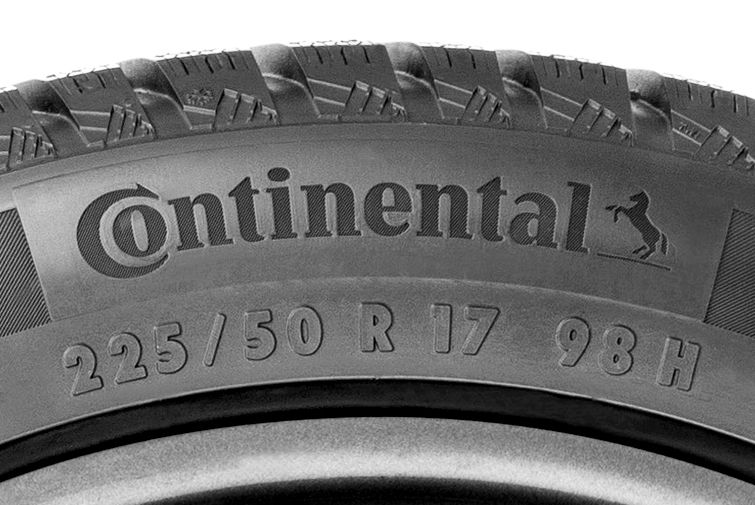 But in the near future they still have to be replaced.
But in the near future they still have to be replaced.
Normal tire wear is when the remaining tread depth is more than the legal limits. For different categories of transport, these standards are different. For passenger cars, normal wear is considered if the residual tread depth is more than 1.6 mm for summer tires and more than 4 mm for winter tires.
Moreover, the determination of the degree of tire wear can be different:
Wear indicator in the central groove
Digital rubber wear indicator
This is how rubber wear is determined using a measuring tool
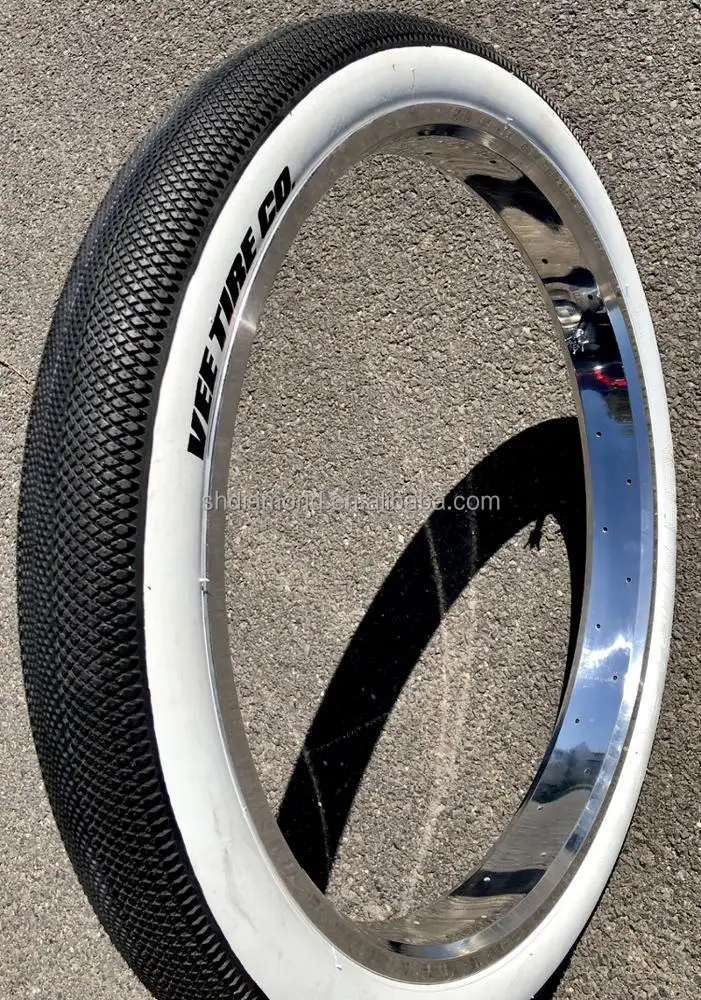 That is, numbers are applied on the surface of the tread sections, which disappear as they wear.
That is, numbers are applied on the surface of the tread sections, which disappear as they wear. No matter how good the tires are, they will wear out during operation. But how quickly this happens depends on the driver. A moderate driving style, timely maintenance of the components of the chassis, maintaining the tire pressure within the norm will significantly extend the life of the tires. At the same time, do not forget about safety, which wheels also affect, so you should periodically check the tread height and change tires if they are worn out.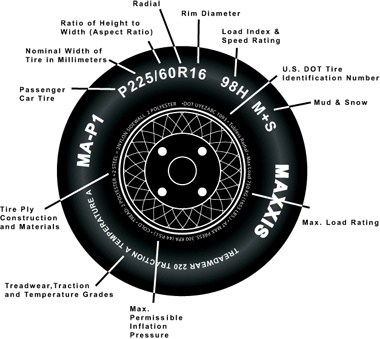
Author Stanislav Prikhodko Reading 6 min. Views 327 Published by
Tire wear during their operation is a natural phenomenon. The warning signal should be unusual tread wear, which could be a sign of serious suspension failure or our negligence. What signs should we be concerned about?
The tire looks strong and resistant to damage, but is actually extremely sensitive to mechanical damage. The damage to the sidewall that is visible to the naked eye is the easiest to spot. They usually form when they come into contact with curbs, potholes, and other obstacles in the road. Then bumps, cuts and cracks of various types form inside and outside, which usually indicate the need to replace the tire.
The situation is somewhat different in the case of unusual tread wear, which also often results in irreversible tire damage. It does not occur suddenly, but gradually during operation, which means that many drivers notice it only at a very late stage.
It does not occur suddenly, but gradually during operation, which means that many drivers notice it only at a very late stage.
The circumference of the tire tread must be evenly worn. Unfortunately, in practice this is often not the case. Uneven tire tread wear on vehicle axles is most commonly caused by driving with incorrect tire pressure, incorrect suspension geometry, or a deformed rim. Depending on the cause, the observed symptoms and effects may be different.
Content
If we notice that the center of the tread is more worn out, this is more worn out, this is more worn out, this that we have been moving with too much pressure for a long time. If the difference in tread height between the center and the side of the tire does not exceed 2 mm, this does not mean that the tires will be used in the future.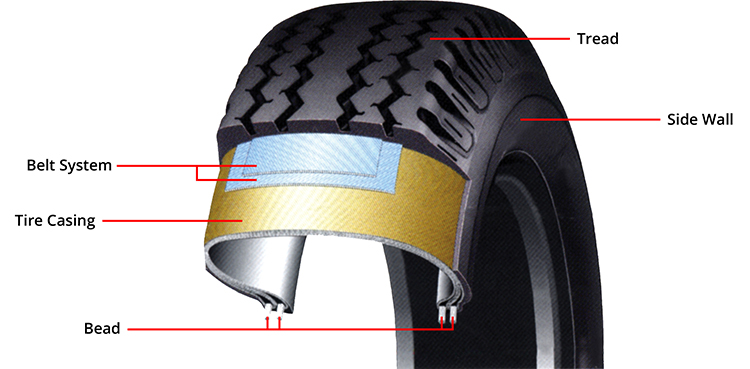 However, the pressure level should be corrected as soon as possible in accordance with the recommendations of the vehicle manufacturer.
However, the pressure level should be corrected as soon as possible in accordance with the recommendations of the vehicle manufacturer.
The sidewall of the tire causes a rounding effect on the tire face. This type of wear is most often caused by riding with too little pressure. It is worth remembering that the weight of the car should fall on the entire width of the tire, and too low pressure means that the forehead is pressed less against the ground. Therefore, the pressure level should be adjusted in accordance with the recommendations of the vehicle manufacturer. Another reason for this wear may be inappropriate driving style, especially overly aggressive cornering. During high-speed cornering, the tires are at the limit of their grip. They have to withstand large overloads, so the outer parts of the tread are heavily loaded. This type of wear can be asymmetrical (more on one side). This unusual tread wear can also be caused by suspension damage, such as a twisted or bent rocker arm, or misalignment of the front wheels, known as over-convergence.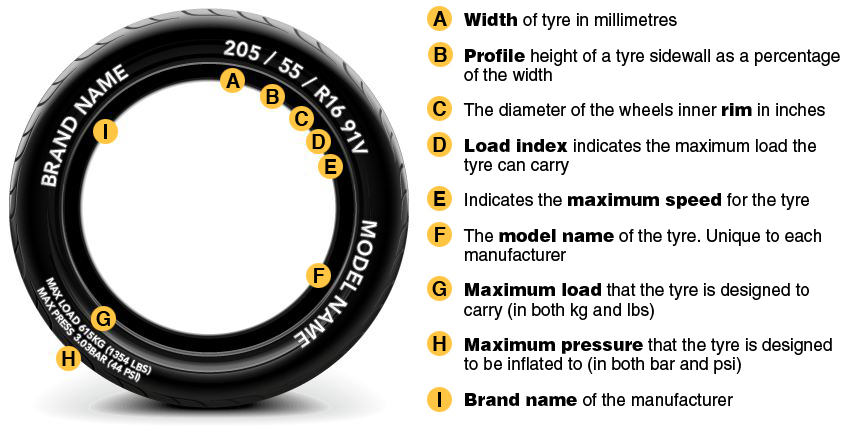 In this case, go to the service for diagnostics.
In this case, go to the service for diagnostics.
Tread teeth are an unwanted form of wear. It is based on faster abrasion of some blocks on the front side. As a result of the serration, the tire tread looks like a sawtooth when viewed from the profile. Teeth can appear along the edges of the tread or in the middle of the tread. This is not a process that eliminates the use of the tire, but it greatly increases the noise it produces and thus reduces driving comfort. In the case of teething, the old adage “prevention is better than cure” works best. The toothed tread can be roughened, but this operation is carried out by few services, in addition, it is associated with significant flattening of the tread. The most effective method of preventing teething is to rotate the splint.
This wear usually affects the non-drive axle rear axle. The rear tires, unlike the front tires, change their position relative to the ground moderately. Therefore, they are more susceptible to this unusual and uneven wear. The tread can be wavy or twisted due to a number of factors. Usually the fault is the incorrect alignment of the wheels of the rear axle or the suspension is faulty. We can observe them more often in cars whose rear suspension consists of the so-called torsion beam and is the result of its failure.
Therefore, they are more susceptible to this unusual and uneven wear. The tread can be wavy or twisted due to a number of factors. Usually the fault is the incorrect alignment of the wheels of the rear axle or the suspension is faulty. We can observe them more often in cars whose rear suspension consists of the so-called torsion beam and is the result of its failure.
Most often, rubber tearing occurs in the area of the sipes or grooves of the tread. This is a common occurrence with newer soft compound winter tires with high tread blocks. This is usually associated with high speed driving on winding roads and unstable coarse soil, and usually in vehicles with significant torque.
You can use a tire with this type of wear, but it's worth checking it regularly to make sure the rubber doesn't crack more.
If we notice deformations on the forehead of the tread, this means that we have probably been driving for a long time with too low tire pressure or overloading the car with a lot of luggage.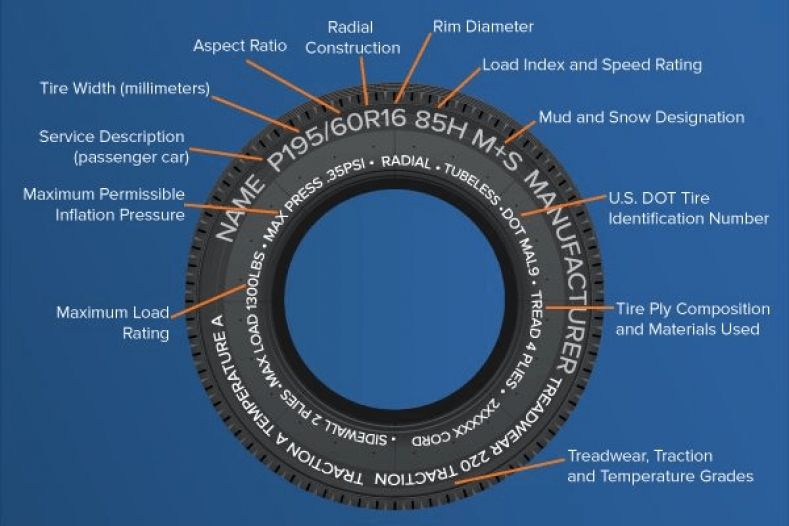
If, together with the deformation, visible metal parts of the tire, i.e. around the tire, damage to the internal structure due to excessive tread wear is possible. The most common cause is superficial cuts on the tread surface, which result from a strong impact or contact with an obstacle, such as a stone or curb. Even a small but deep cut weakens the internal structure of the tire, which leads to its deformation. This tire is unusable and must be replaced.
Occasionally, hard braking and wheel locking in non-ABS vehicles will wear the tread surface in a pattern similar to the ground contact surface. These types of features usually appear on the same axis. Damage can be increased by emergency braking on unstable coarse ground. In this case, the tire may be scratched or broken. Depending on the degree of damage, the tire may be suitable for further use. For large cavities, it should be replaced. If we use a car with ABS, it is worth checking the condition of the brake system.